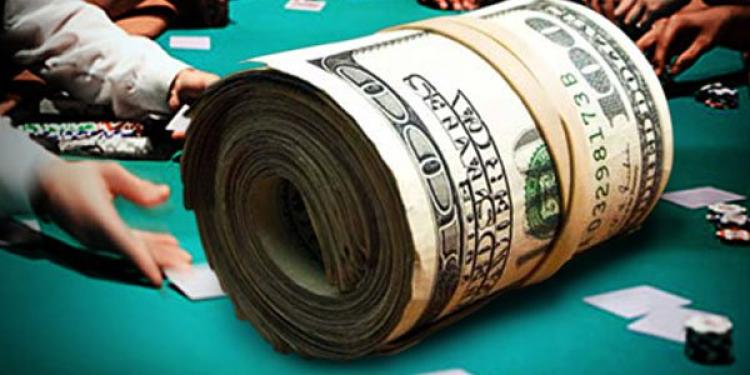Super High Roller Poker Events: Good or Bad for the Industry?
Posted: February 19, 2014
Updated: October 4, 2017

Can Super High Roller poker events be harmful to the poker industry and ordinary poker enthusiasts?
Super High Rollers are a special breed of poker players, and all self-respecting casinos, poker rooms, and poker festival organizers are looking how to lure them to come to their places. While there were always tournaments catering to these types of players, the mega-whales got into the public spotlight quite recently.
It all happened when three years ago the renowned poker festival held under Australian gambling laws, the Aussie Millions, has added a peculiar event to their 2011 schedule – the Super High Roller. Why was it different from the rest? Well the AUD 250,000 is not something anyone can shell out to play a poker tournament.
The event Down Under became the biggest buy-in poker tournament played at Australian poker rooms or anywhere else in the world at that time. The Aussie Millions have already made history before with the first ever $100,000 buy-in event, but 2.5 times that is a big step forward. The Super High Roller event was partially backed by Full Tilt Poker, delivering some of its professional team members.
The tourney has also saw several Asian players bringing cash to the tables, and this is where the term “Macau Businessmen” comes from. The event surely was epic, and it’s not really important who won it that time around. Well it was Erik Seidel, taking home just over $2,500,000 for his troubles. The most important question here, had the Super High Roller had a positive effect on the world of poker?
The legacy of the Super High Roller tourney
The tournament itself is going strong, and the most recent edition, the 2014 was won by Phil Ivey, adding a nice AUD 4,000,000 to his career winnings. But it just might happen so, that the Super High Roller has actually affected the poker industry in a bad way.
Let’s take a look. Right after the inaugural tourney Down Under, Full Tilt Poker launched the Onyx Cup – a series of poker events with buy-ins ranging from $100,000 to $300,000. The series was hoped to boost the image of live poker on TV. But along came the Black Friday and destroyed the Onyx Cup, only to give way to other Super High Roller endeavors.
What is the current situation?
Are Super High Roller events bad for poker industry?
• Aussie Millions was the first festival to host Super High Roller under Australian gambling laws
• The initial $250,000 tournament was held in 2011 and the winner took home $2.5 million
• Concerns are being raised that Super High Roller events are killing public interest
This year Aussie Millions was home to 2 six-figure events, and both have attracted record-breaking fields. The $100,000 Challenge saw 76 participants (more than double than last year), and the $250,000 Challenge had 47, up from 27 last year.
While the record number of participants and whopping prize pools are naturally a dream of any poker organizer and marketer, but it seems that some of the participating players have a different point of view.
Dan Shak, a regular High Roller tourney player, had Twitted his concerns about the Super High Roller games (after being knocked out of the $100,000 Challenge). Australian gambling news had the following quote from Dan: “I’m sorry to say this about a game I love so much but whether you can or can’t afford it a 100k and 250k both unlimited for whole first day running around the floor looking for another 250k it just doesn’t seem right that these events overshadow the main events where people have put their heart and soul on the line where skill is at least more than 50 percent of the game.”
He added: “And these massive turbo unlimited [re-entry] get so much press because of how much money is on the line. Seriously considering boycotting playing them till the re-entry is only one.”
Who is Shak anyway? He’s an intelligent hedge fund manager, which makes much more from his day job, than from playing poker, be that Super High Roller games or others. He’s almost always there to play High Roller events, but modestly says he’s not a professional poker player. So as you can see, he’s not some cry-baby, wooing about having lost a bunch of money.
Naturally, the likes of Phil Ivey, Sam Trickett, and other renowned faces of the professional poker world, welcome Shak to the High Roller tables with a certain sharky smirk. But the words about boycotting these events from a player of his caliber and bankroll should raise serious concerns with the organizers.
Is Shak right?
The main point Shak is making is that these huge buy-in Super High Roller events are overshadowing the Main Events at the poker festivals. And they were and still are what people are coming for in the first place. For many it takes months of preparation, training, raising buy-in money or trying to qualify at online poker sites in Australia.
And then along come big daddies with a suitcase full of cash and still all the thunder from ordinary Main Event participants. Needless to say that TV viewers at home will certainly prefer watching the cash-loaded Super High Roller events, thus decreasing the ranking of Main Events – traditional TV money makers for poker organizers.
Think of this, an amateur poker fan turns on the TV to watch some poker action. What is he going to watch? A final battle between Daniel Negreranu, Erik Seidel, and Phil Ivey with close to $10,000,000 on the line? Or another final table where the first prize is “only” a $750,000 and players don’t even come close to the above-mentioned pros?
Can anything good come from ordinary players watching Super High Roller Events? Certainly not. Do you seriously think that someone playing $1/$2 limits at home with a monthly craze of joining a $50 buy-in tourney, can afford to buy-in for $250,000? But after watching that, who’s going to aspire for a Main Event seat, something online sites have been profiting from by hosting a long list of small buy-in qualifiers.
Dan Shak, your point is loud and clear!
The future of Super High Roller events
Having said all that, Super High Roller events are definitely here to stay. Once released the genie just doesn’t go back to bottle. What these events need is proper management and marketing, that’s all. But it’s not only the job of the organizers to limit the number of re-entries, but poker pros themselves have to balance between participating in these events, and the more public ones – the big festival Main Events.
Let’s hope poker bosses will look at the current situation without the pink glasses of millions they’re making. Poker is a beautiful game and there’s no need to kill the public interest in it by going after the big bucks and publicity.












